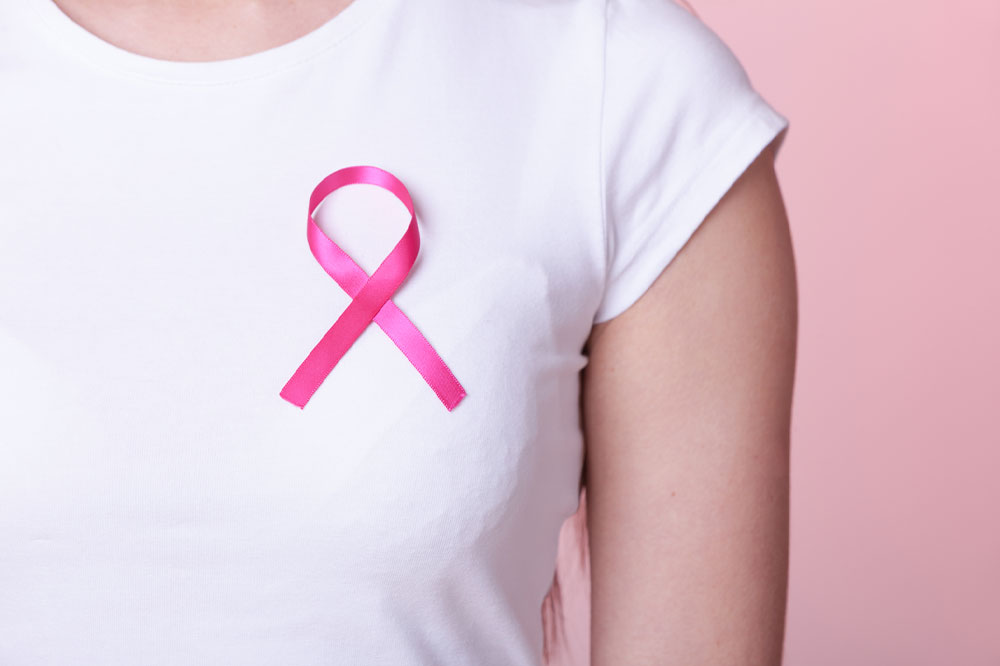
6 common signs of breast cancer
Cancer, which develops in the breast cells, is known as breast cancer. After skin cancer, the second most prevalent kind of cancer among women in the country is breast cancer. It might affect women and men; however, it is more common in women. Today, there is substantial awareness about this particular type of cancer. This has been a big motivator toward the advancement in breast cancer treatment and accurate diagnosis.
Consequently, the breast cancer survival rate has also increased, and the deaths from this condition have declined sharply. This is attributed to a better understanding of the disease, a tailored treatment approach, and early detection. The truth is, the earlier breast cancer is detected, the easier or quicker it is to cure. But for faster detection, one must know the common breast cancer signs. So, what are the prevalent symptoms associated with breast cancer? Read below to find out.
Change in the skin’s texture
One of the most common breast cancer signs is changes seen in the skin’s texture. It can be an outcome of inflammation and the skin cells changes. A few examples of texture changes are skin thickening in some parts of the breast and scaly skin development around the areola or nipple, giving an impression that the skin in the region is dry or sunburned. The changes in texture can result in itching. Though associated with breast cancer, it is not the most common. Broadly, the texture changes might be a symptom of any rare breast cancer category, known as Paget’s disease. However, texture changes might also result from some benign skin conditions, such as eczema and dermatitis.
Nipple discharge
Nipple discharge might be an outcome of a nipple squeeze or an underlying infection. However, a person must consult a doctor when the discharge happens without squeezing the nipple, there is blood in the discharge, or discharge is only limited to one breast. However, regardless of whether the discharge is a symptom of something benign or malignant, it is not something to ignore. Nipple discharge might often demand immediate treatment.
Swelling
During menstruation, breasts tend to swell or become tender. This is normal, but if one notices an abnormal swelling or tenderness, which lasts longer than a week, one must consult their doctor. Swelling is the body’s alarm, which indicates that there is something that may not be right. For example, when one has breast cancer, normal breast function might be hampered. This can make the breasts swell. Usually, breast lumps are not painful. However, they may result in swelling, which can be painful.
Changes in nipples
The appearance of breasts can differ from person to person. And the same goes with nipples. However, sudden changes in breast and nipple size are a cause for alarm. If the nipples have always been the way they are, they should not be problematic. For instance, if one’s nipples have always been inverted, it is normal. However, if earlier the nipples were not inverted, and they suddenly went from pointy to partially or fully inverted, it could indicate something problematic, such as breast cancer. Regardless of how big or small the change may be, it must be brought to a doctor’s attention. Also, some women have hairy nipples. They are normal too. Almost one-third of women have hair on their nipples.
Dimpling
Dimpling might be a sign of inflammatory breast cancer or aggressive breast cancer. When the body has unhealthy cancer cells, it can result in lymph fluid buildup, which can cause dimpling, swelling, or pitted skin.
Lumps
It is one of the most well-known and earliest breast cancer signs. One may notice a hard lump or several lumps in the breast tissue, underarm areas, or collar bones. In some patients, the lumps might feel like thicker tissue areas than the rest of the breast. But sadly, the area covered by lumps might be both small or large. In addition, some people will have irregularly shaped lumps, which are firm to touch and painful.




